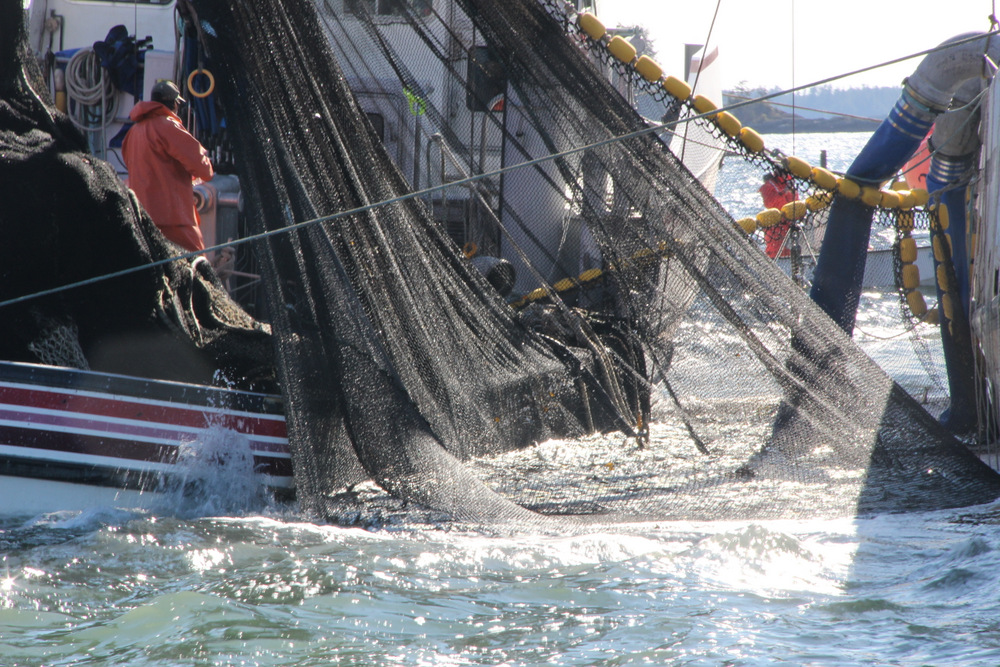
A seiner purses up as a tender pulls alongside to start pumping herring, during the fourth and final opening in the 2014 Sitka Sound sac roe herring fishery. (KCAW photo/Rachel Waldholz)
Herring seiners are heading to Sitka Sound this week as the sac roe herring
fishery goes on two-hour notice at 11 AM Thursday.
That means the fishery could see its first opening sometime Thursday afternoon if test fishing shows the herring are ready to harvest.
The Alaska Department of Fish and Game has been sampling herring and flying aerial surveys of the area. The guideline harvest level for the fishery this year is just under 15-thousand tons. That is almost double last year’s GHL. The harvest last year was eight thousand seven hundred and 56 tons (8,756) worth a little over $2-million at the docks.

ADF&G biologist Dave Gordon speaks to seiners and processors at a pre-season meeting Wednesday afternoon (3-16-16). “Let’s get rolling,” he said. (KCAW photo/Woolsey)
Seiners and processors met in a pre-season meeting in Sitka Wednesday afternoon (3-16-16). Area management biologist Dave Gordon, who oversees the fishery for the state, had mixed feelings about this year’s harvest target.
“Well the good news is we got a big recruitment of fish coming on line. The bad news is that there are going to be challenges to get the quality fish that we’ve been seeing here over about the past decade.”
One problem is that the herring are relatively small. The sac roe fishery in recent years has harvested herring weighing around 150 grams. Test fishing so far this year has produced fish in the 90-100 gram range.
Another problem is demographic: Almost an entire age class is missing. Dive biologist Kyle Hebert said that poor growing conditions in the Eastern Gulf of Alaska had affected the entire population of 5-year olds.
“In 2011 there was a very low chlorophyll in the surface waters. And we know that it’s critically important for the herring larvae to have adequate food supply in those very early weeks after they’ve absorbed their egg sacs. That could very well be an explanation for why there was such poor recruitment region-wide.”
So that will leave herring seiners targeting a limited population of mature fish, in the 6-8 year-old range, before younger, smaller three-year olds swim into the mix.
It’s typically a competitive fishery, with permit holders jostling to catch the herring in some quick openings. Last year permit holders agreed to fish cooperatively, leaving some at the docks and splitting the proceeds between those who fished and those who didn’t.
The state research vessel Kestrel is expected to arrive in Sitka early Thursday morning (3-17-16), and ADF&G will begin test fishing in earnest, looking for schools of herring at least 110 grams in average size, with sufficient numbers of females bearing valuable eggs — or sac roe — which are marketed primarily in Japan and Asia.
KCAW’s Robert Woolsey contributed to this report.































